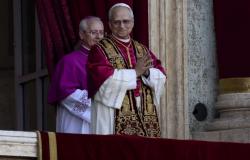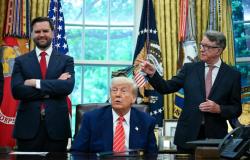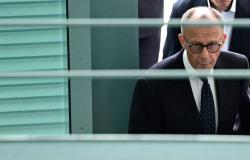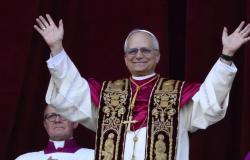Habemus Papam. This Thursday, May 8, at 4 p.m. Thursday, the traditional white smoke rose in the sky of Rome, announcing the election of a new sovereign pontiff to the world. It was the joy in Saint-Pierre square, full of cracking.
The conclave, united since May 7, has appointed his choice: American Cardinal Robert Francis Prevost, 69, became the 267th pope of the Catholic Church and takes the name of Léon XIV.
This election marks a historic first: never before an American has accessed the throne of Saint Peter. Originally from Chicago, in Illinois, Robert Francis Prevost was so far cardinal prefect of the Dicastère for the bishops and considered as one of the favorites in the succession of Pope Francis.
An early vocation and an international journey
Ordained a priest in 1982, at only 27 years old, Robert Francis Prevost illustrated himself very early by his erudition and his missionary commitment. Holder of a doctorate in canon law from Pontifical Saint-Thomas of Aquin in Rome, he devoted a large part of his life to the service of the Church in Latin America, especially in Peru, where he was missionary before being appointed bishop of Chiclayo.
His long stay in South America, his knowledge of the field and the pastoral realities of the continent, as well as his proximity to the local communities, shaped a church man deeply anchored in the concrete, sensitive to the social challenges and the realities of the peripheries.
A profile at the crossroads
-Leon XIV’s journey reflects a unique synthesis between doctrinal rigor and missionary opening. His double experience-at the Roman Curia and on the Latin American terrain-gives it an international stature and a rare capacity to navigate between the geopolitical and spiritual complexities of the Universal Church.
If it is still relatively discreet about its major orientations, the first analyzes agree that the new Pope should continue some of the sites initiated by his predecessor, while printing his own brand, undoubtedly more focused on the formation of the clergy, episcopal collegiality and listening to local churches.
A pontificate under the sign of transition and hope
With Léon XIV, the Catholic Church opens a new page in its history, placed under the sign of continuity in change. Its election reminds us that the universality of the Church is now embodied in an ever -broad diversity. First American pope, it symbolizes the growing anchoring of Catholicism outside Europe.
The whole world is now looking towards Rome, curious and attentive to the first steps of this new pontificate. At 69, Pierre’s successor bears a heavy mission: that of guiding the church in an era of upheavals, debates and quests of meaning.
Tristan sahi







